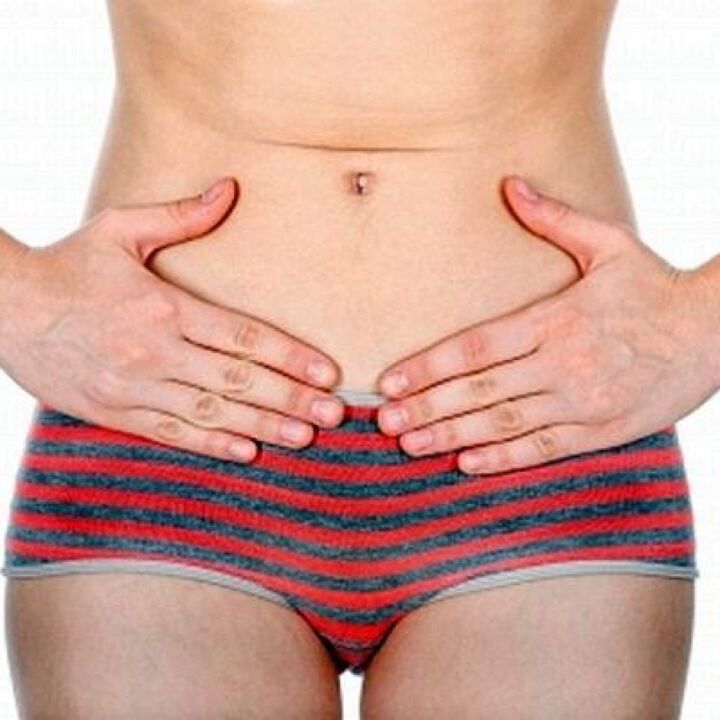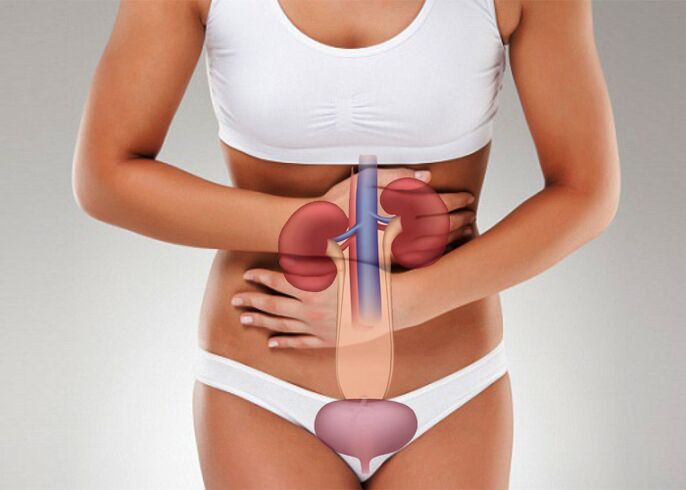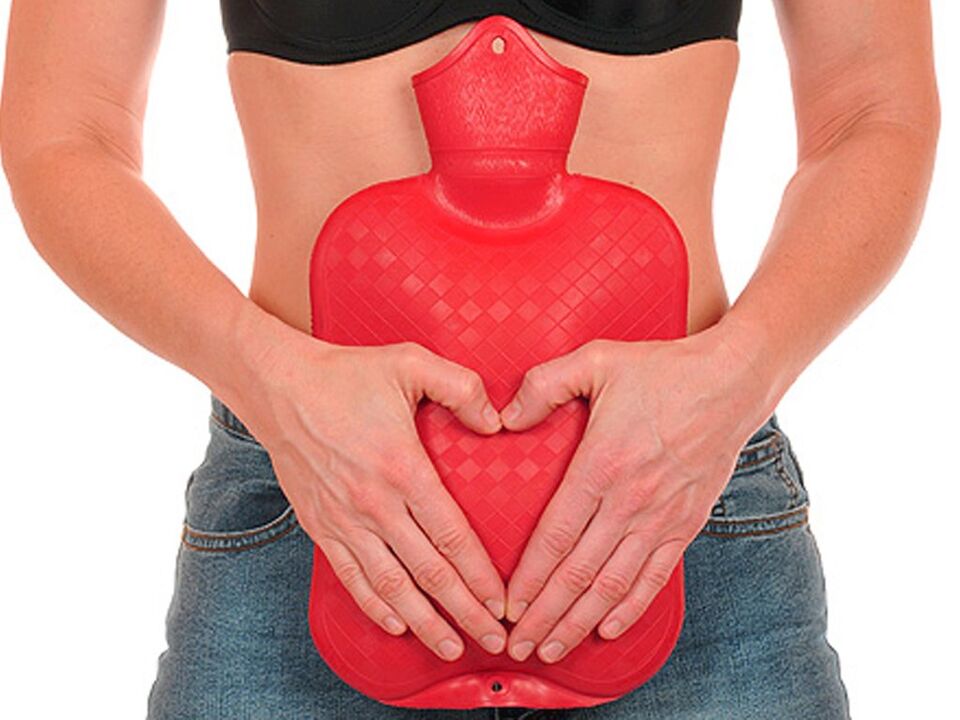In the urine system, the bladder collector-storage collector plays a role: exhausted blood filter products come from the kidneys through the urethra.Thanks to the bladder and two muscle rings, one of which obeys the conscious command of the central nervous system, a healthy person can carry out urination, need and opportunity as needed.In the early stages of evolution, the "opportunity" was firstly intended as a safe atmosphere;With the advancement of human civilization, the development of urination required special conditions, ie the interruption of social activity, a specially designed place and/or loneliness to the opposite gender.

Cystitis is an inflammatory procedure on the inner walls of the bladder;A disease that causes pronounced physiological and psychological discomfort and a certain social malignancy.Any person of age and gender can face this misfortune, but it is no coincidence that cystitis is sometimes called a curse of a modern woman (it would be better to say "one curse" because it is not the only such disease).The main reason lies in anatomy: the male female urethra (urethra) is much shorter, more flexible, wider and straight.This creates extremely comfortable "gates" to penetrate increasing urogenital infections, the prevalence and diversity of which in the modern world is indeed very high.And while not all cystitis has an infectious nature, the mechanism of development is a key factor in the epidemiological differences between the shower: according to different sources, cystitis is 6-8 times more common in women of active age than in men.
In general, statistical analysis allows the problem to be evaluated at various angles.Thus, many sources indicate that at least one cystitis attacks in life experience at least half of all women;At least every fourth periodically or chronically ill (some authors consider this data to be very low because not all sick people are looking for a doctor).According to medical documentation, the proportion of patients with cystitis is 67%in clinics;In urological hospitals, this indicator is 5-12% (in other words, hospitalization of cystitis is very high, which again confirms the social significance of this disease).The frequency of acute and chronic forms is about 2: 1.
The difference in the occurrence between the floor is balanced between the elderly and the senile age: in older age categories, the proportion of men in cystitis is primarily ill with similar percentage of women.But in a mature, young, young (and sometimes teenage or even childhood) age, when you have to live, you seem to be happy!- Cystitis is waiting and chooses mainly women.
Reasons
From infections, the wall of the bladder is protected by nature, in principle quite well;The vast majority of the infectious etiology of cystitis were not caused by a combination of vulnerability, but a combination of harmful external and internal conditions, most of which are somehow related to the lifestyle.The main risk factors include acute and chronic infections of other body systems (from caries and colon inflammation to acute respiratory viral infections -non -pathos), hypotermia, hypovitaminosis, surgical exhaustion, unhealthy diet, excessive sleep.Traditional "and extreme practical exercises), psychoemotic stress, random sex (especially" non -traditional "and extreme exercises) are hygiene (it is difficult to imagine how much hygiene skills and needs should not be sufficient in the 21st century and this factor remains separate).In addition to another anatomical endocrine cause, namely hormonal fluctuations (especially cystitis aggravations are attached to the menstrual cycle phase, pregnancy or menopauusus are considered separately in the literature).

It is also noted that the infection can penetrate the bladder not only in growing but also decreasing roads - based on the kidney affected by nephritis.
Non -infectious forms include chemical toxic (including drugs), allergic, radiation, traumatic, parasite.
Symptoms
It is one of the classic symptoms of cystitis, above all intense discomfort during urination: rubbing, pain, burning, etc.Urination often leaves the feeling that the bladder is not completely excreted;Many patients complain about repeated or false urges, notices the "leak" of the canvas urine or the mandatory nature of the urgency (since the anatomical causes are again in women who often have no time to run and are therefore forced to stay closer to the toilet).In some cases, the accumulation of blood or a mixture of blood in the urine is explored;Hematuria should be called the most dangerous urological symptom and requires immediate differential diagnosis, as the presence of blood in urine can be caused not only by cystitis but also by the causes of life.
It is typical and usually expressed severely with the pain syndrome with cystitis: pulling or spicy, explosion or painful pain in the lower abdomen, often with radiation with the feet or back.Without such or similar pain, up to 10% of all cystitis.Sufficient immune response, general malaise, fever, weakness, headache are often intense.
The most likely and severe complications of cystitis include the so -called interstitial form when not only the mucosa but also the deeper layer of muscle walls are involved in the inflammatory process (this can eventually lead to bubble wrinkles and pronounfailure), and this can cause very serious consequences (pronounced failure) and infertility, etc.).
Diagnosis

In addition to clinical survey and normal urological control (however, many women treat cystitis rather for the urologist but to their "gynecologist", laboratory tests are primarily prescribed. To this day, many methods for detection of pathogen are successfully applied - as shown above, the most likely cause.Diagnostic necessities include ultrasound, cystoscopy, cystography, biopsy and other tests less than less than cystoscopy.
Diagnosis
In addition to clinical survey and normal urological control (however, many women treat cystitis rather for the urologist but to their "gynecologist", laboratory tests are primarily prescribed. To this day, many methods for detecting the pathogen are successfully applied - as shown above, the most likely cause.Ultrasound, bladder examination, X -radiation examination of the bladder, biopsy and other studies are also required as a diagnostic necessity.
Treatment
Acute cystitis in chronic turns is often easy and misleading: gradual reduction of symptoms, even completely disappearance, does not mean healing at all.Therefore, signs of cystitis described above require an immediate visit to the doctor in any of their combinations (especially since these symptoms are in many other urological diseases) and not the expectations of patients while "passing through".On the way, it is noted that a huge number of good, smart, friendly, proven for centuries, and other similar tips on the Internet (where recommendations can be found in a fairly reasonable range between schizophrenic or fraud) is a factor of common chronic and cystitis complications.
Based on the results of the diagnostic examination, a particular, always strictly individual treatment system is always required, primarily to eliminate the cause of inflammation.In different cases, antibiotics, antiviral, antifungal drugs, immunomodulators and immunostimulants, antihistamines and anti -inflammatory drugs, as well as antismodes, can be used.In other areas, sewage treatment of chronic focus of infection and the treatment of background diseases (nephrolithiasis, prostate adenoma, etc.) are needed.In addition, a diet, increased fluid intake and a economical system are needed to avoid hypothermia and other risk factors.Fitotherapy drugs are prescribed exclusively by a doctor and also checks the effectiveness of the administration.
These diseases are, provided, the cystitis is healing.




























